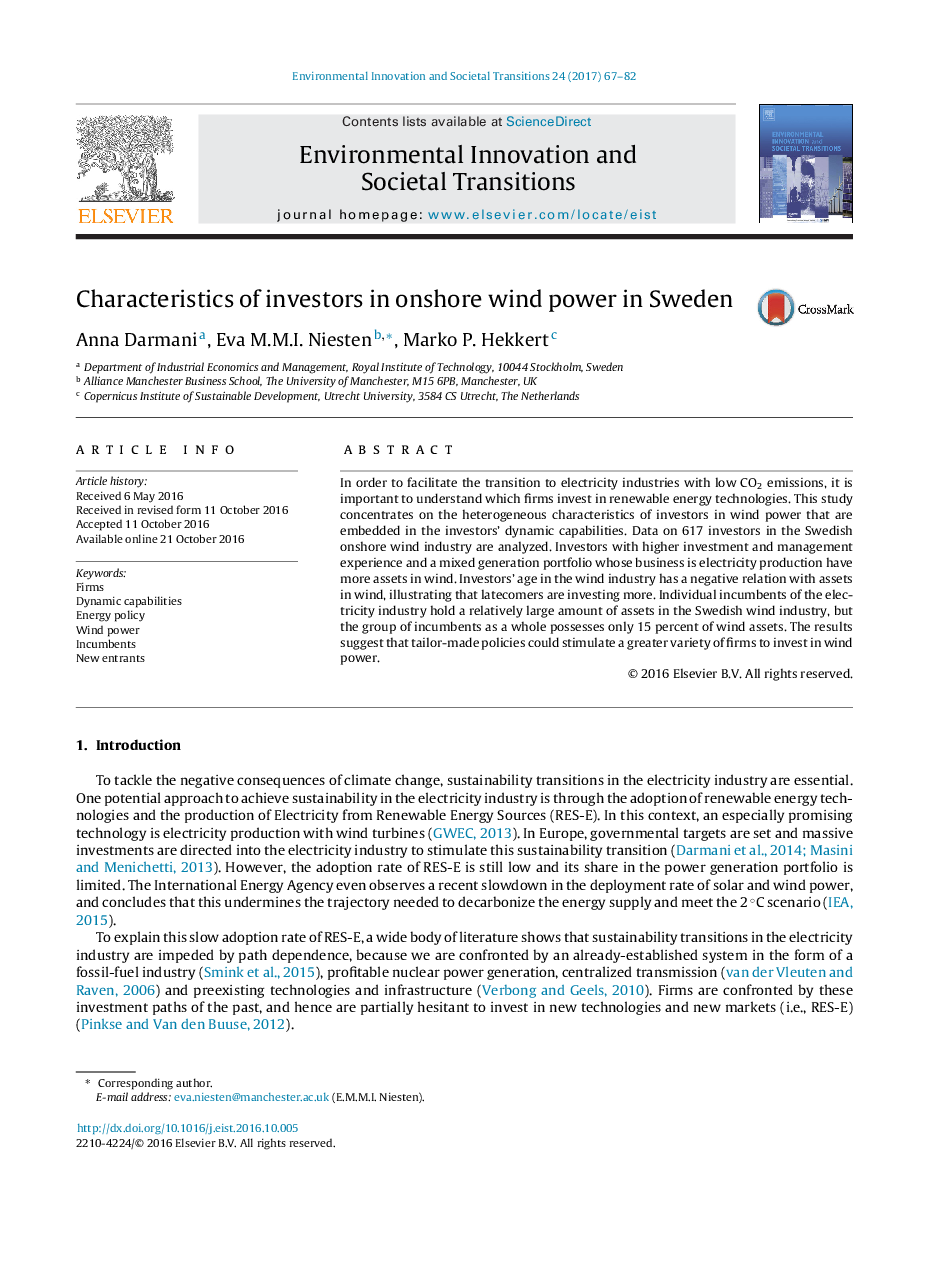| Article ID | Journal | Published Year | Pages | File Type |
|---|---|---|---|---|
| 6464194 | Environmental Innovation and Societal Transitions | 2017 | 16 Pages |
â¢Dynamic capabilities of investors matter and influence their amount of wind power assets.â¢Investment experience, generation portfolio and industry of firms affect investments.â¢Management experience of firms influences investments as an inverse U-shape.â¢Incumbents of the electricity industry invest more in wind in recent years and thus are latecomers in the wind industry.â¢Policies tailor-made for heterogeneous investor groups are more likely to boost investments in renewable energy.
In order to facilitate the transition to electricity industries with low CO2 emissions, it is important to understand which firms invest in renewable energy technologies. This study concentrates on the heterogeneous characteristics of investors in wind power that are embedded in the investors' dynamic capabilities. Data on 617 investors in the Swedish onshore wind industry are analyzed. Investors with higher investment and management experience and a mixed generation portfolio whose business is electricity production have more assets in wind. Investors' age in the wind industry has a negative relation with assets in wind, illustrating that latecomers are investing more. Individual incumbents of the electricity industry hold a relatively large amount of assets in the Swedish wind industry, but the group of incumbents as a whole possesses only 15 percent of wind assets. The results suggest that tailor-made policies could stimulate a greater variety of firms to invest in wind power.
